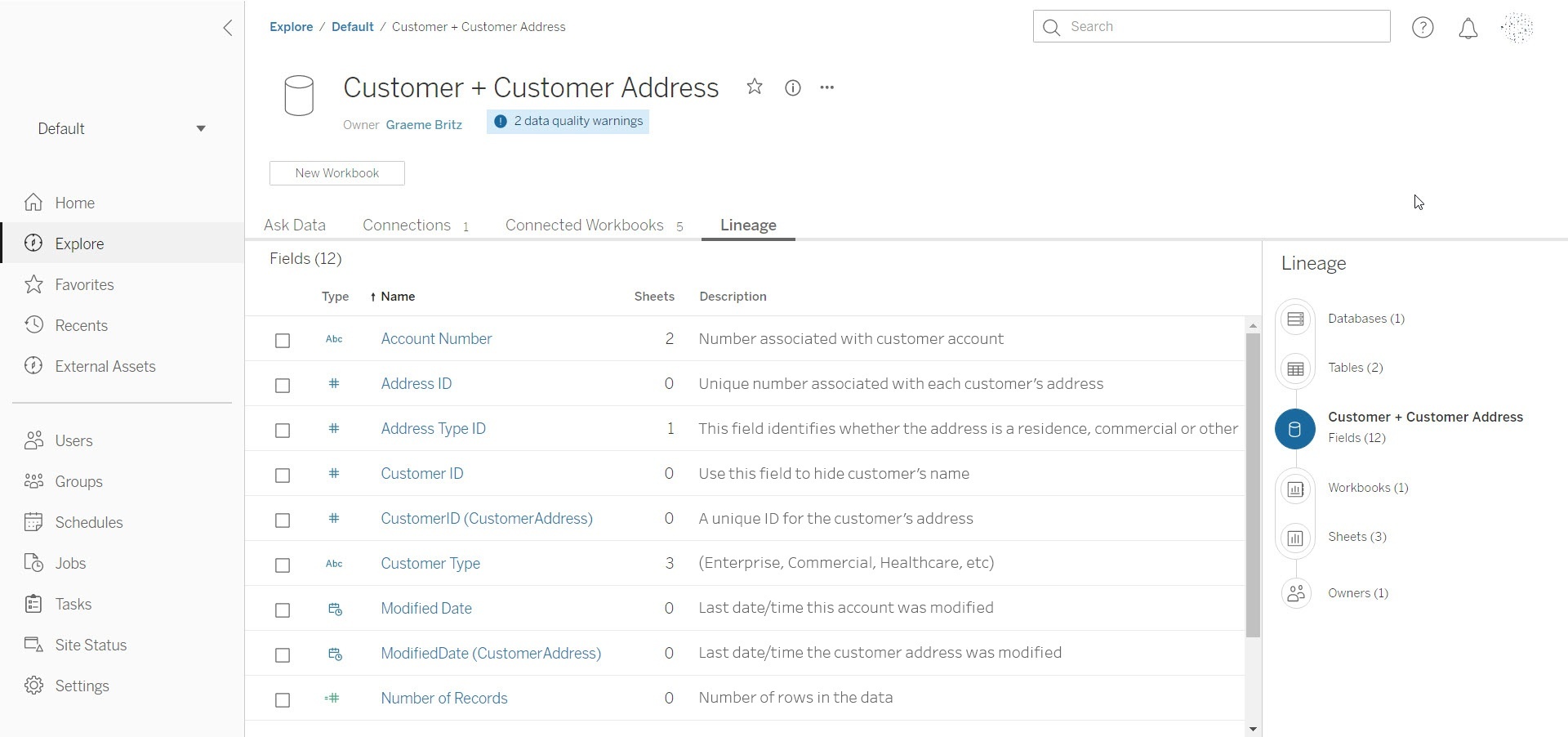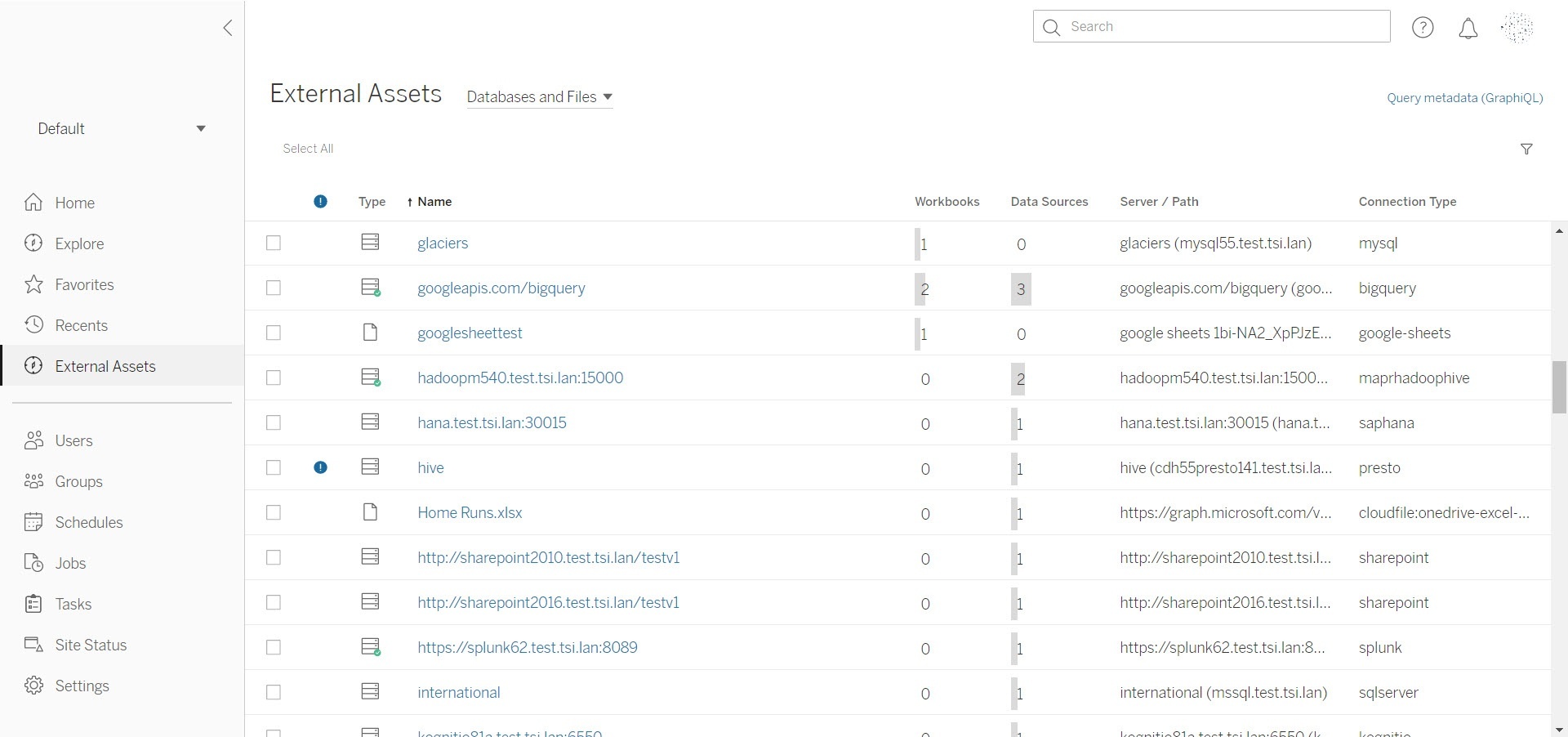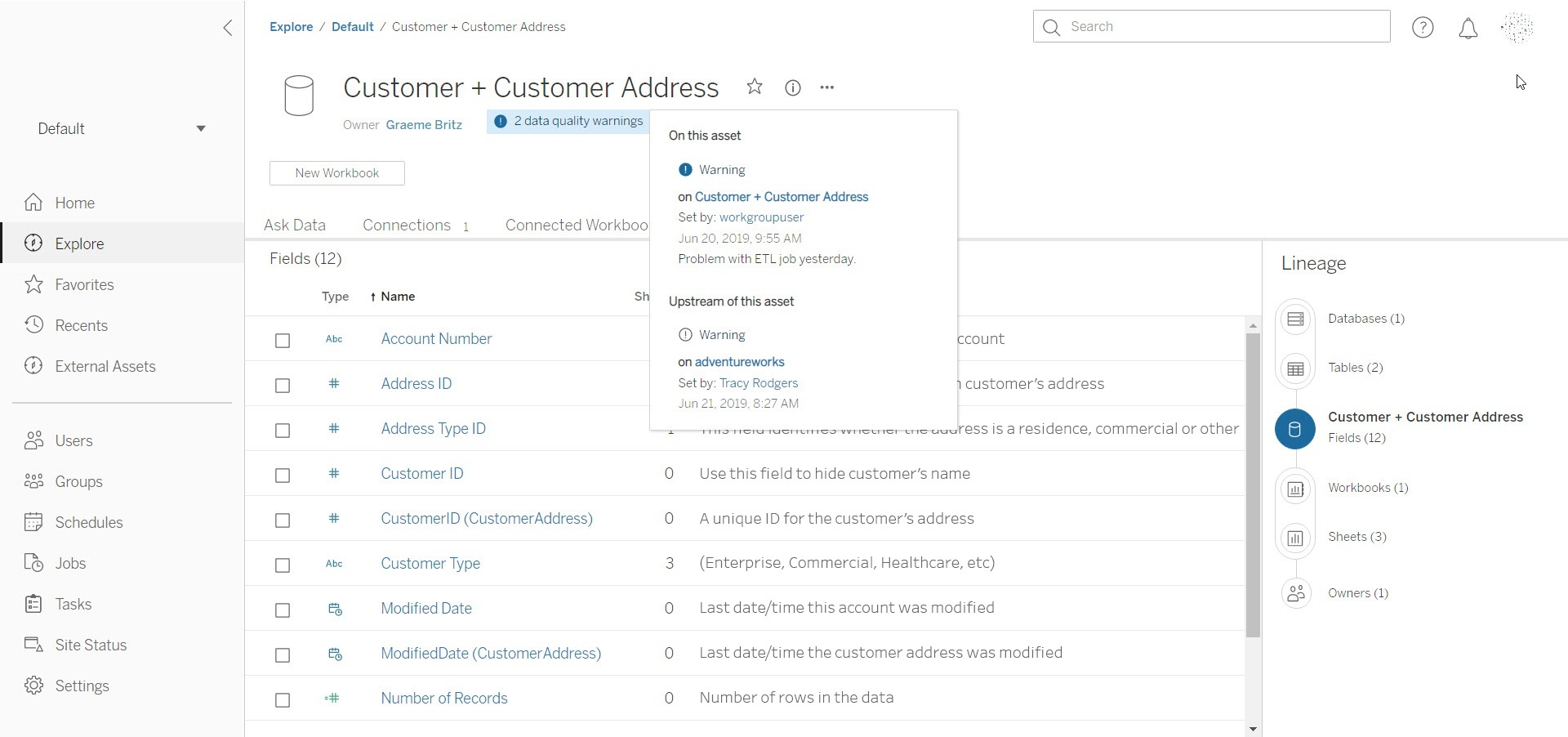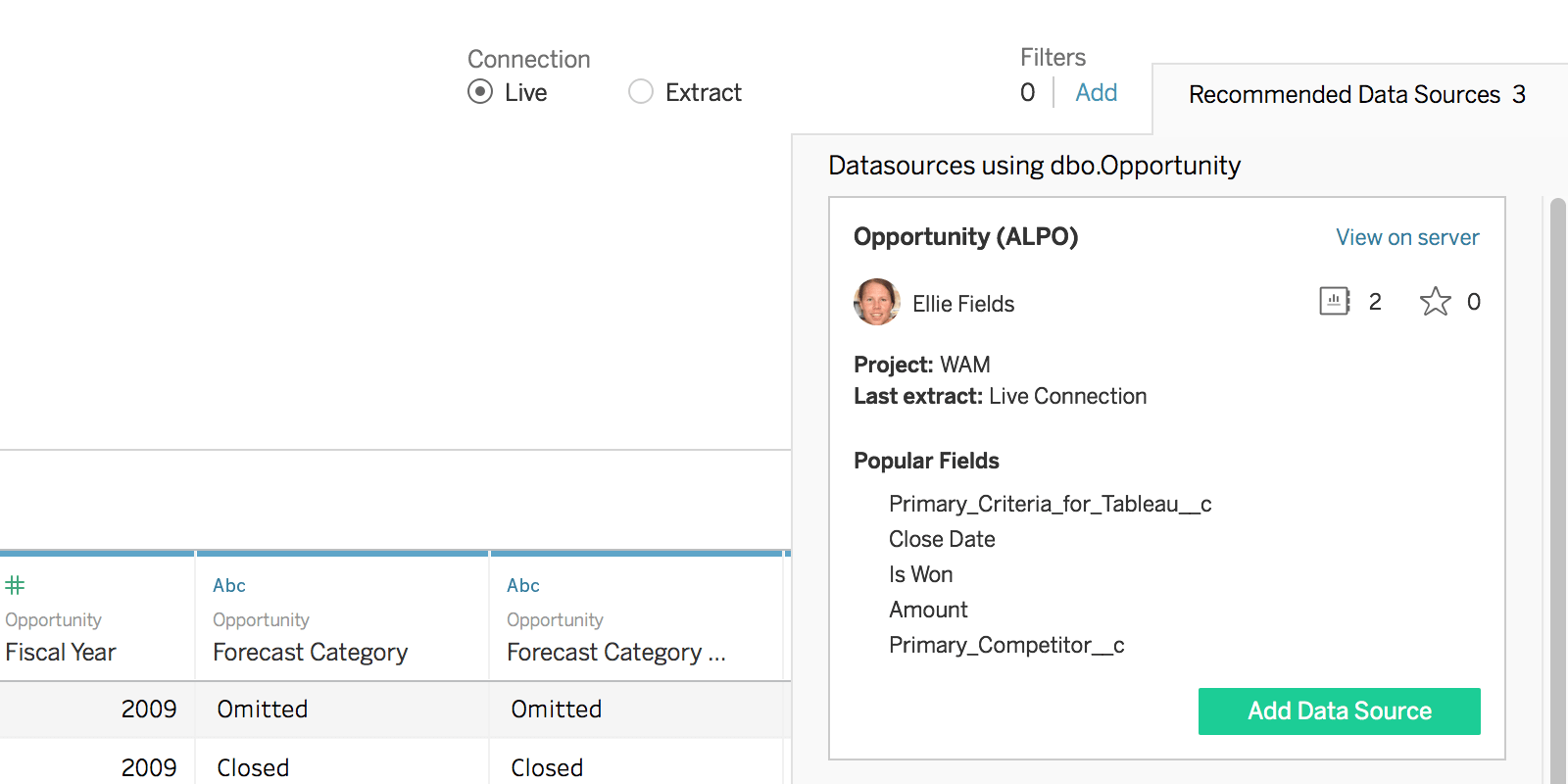Enterprise data management (EDM) is the process of inventorying and governing your business’s data and getting your organization onboard with the process. In other words, EDM is as much about managing people as it is about managing data. Data management means making sure your people have the accurate and timely data they need, and that they follow your standards for storing quality data in a standardized, secure, and governed place. In this quick guide, we’ll answer commonly asked questions about enterprise data management and point you to some resources so you can learn more.
Who’s in charge of enterprise data management and what do they do?

Screenshot of a data lineage in Tableau Catalog
Enterprise data managers are most often database administrators, IT administrators, or IT project managers. They are in charge of the process of managing your business’s entire data life cycle. They document and direct the flow of data from ingestion, and they control the process of removing data the business doesn’t need. This life cycle is also referred to as a data lineage. By managing your data lineage, your data is less vulnerable to breaches, incorrect analysis, and legal complications. These legal complications arise from having insecure personally identifiable information on-premises or in the cloud.
Benefits of enterprise data management
By making data management a priority, you are ensuring that your data is in a secure place and available when your business users need it. This benefits your teams by enabling the following:
- Accessing high-quality data for accurate analysis
- Ensuring your data is secure and compliant under regulations
- Consolidating data across multiple sources for increased efficiency
- Having a consistent data architecture that scales with your enterprise
Data management solutions, like Informatica, can assist you with all of these. Further, data analysis and other data work will be more efficient because your people will know exactly where to find the data they need. Additionally, a well-governed data lineage makes it easy to quickly identify data dependencies, understand who is using each data source, and make relevant tables more accessible.
Master data management vs. enterprise data management

Enterprise data management catalogs both internal and external assets
Master data management is similar to enterprise data management, but it involves creating a single view of your data in a master file or master record. This master file will define the essentials you need for a given process. Think of this like a requirements document that details the necessary fields and inputs to your data source. For example, what does your sales department need to store its leads and opportunities? To start, it will probably need names, phone numbers, and email addresses. These fields will likely be piped in from another tool and we’ll need to know the relevant details. This master file will list every requisite dimension in a dataset in a standardized format. A more complicated example of master data management would be creating a master file with complex categories or dimensions, e.g., vendors in your supply chain, their location, and reference data. It all depends on what business data you use in the process you want to manage. Deciding between a master data file or another enterprise data management strategy is an important step in the project.
Components of enterprise data management
The first step in the journey of data management is to complete a data audit. The data management leader would list or chart the data produced, used, and deleted in a business process. This type of data-cataloging project is crucial in ensuring a big picture of the data. We need to be sure to catalog everything as comprehensively as possible, even emails and notes. Once data is cataloged, clean the data and transform it into a standard format. Unfortunately, projects like data cataloging and data preparation can be challenging, intensive, and complex. But once those projects are completed, you’re much closer to successful data management.
Documentation and transparency

Automated data quality warnings can help make data sources are governed at scale
Data administration and governance should have regularly scheduled maintenance projects. Identify your data steward, who will maintain the master file or the documentation for data management. Then develop and document a clear succession plan for who will maintain it if your current data steward leaves the company. Clearly define the roles and rules of your enterprise data management program, and decide how involved the IT department and database administrators will be. Publish your documentation, keep it all in an easy to access and shared location, and take an active role in guaranteeing the right people are appropriately informed of the contents. Documented data management procedures ensures transparency for the rest of your organization and its integrity should carefully considered. Data stewards can be the go-to people for questions and concerns. When transparency and collaboration are prioritized, your organization will support and trust your mission for data management.
Best practices for enterprise data management

Tableau's Data Management can leverage AI to recognize fields in use and related data sources to enable analysts
As discussed earlier, enterprise data management is as much about managing people as it is about managing data. Keep these simple best practices in mind when starting on your own data management program:
- Data managers need executive leadership, like the chief technical officer (CTO) or chief data officer (CDO), to buy in
- Educate teams on the importance of data management and following your guidelines.
- Prioritize data security and governance
- Catalog your data
- Improve data access to appropriate teams
- Leverage modern data cataloging technologies to scale
Even before you get started on your enterprise, data professionals can start data management in their own analytics environment with Tableau’s add-on solution, Data Management.
